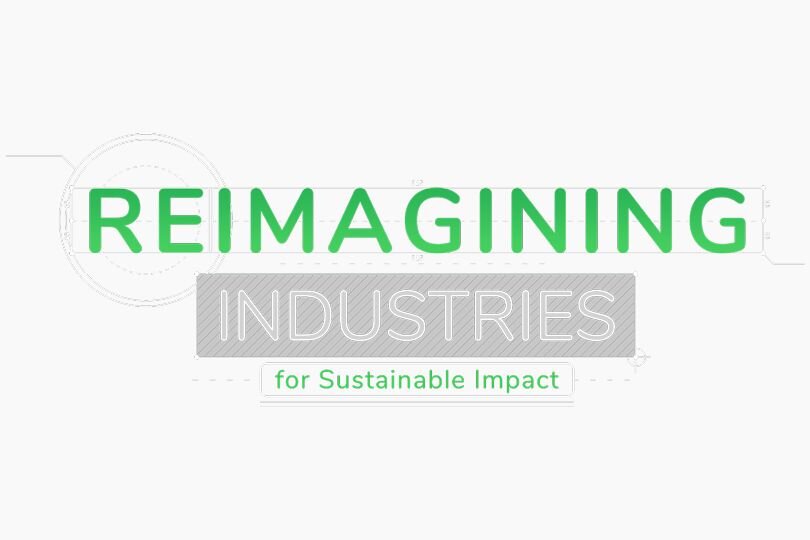Reimagining data centers & AI for sustainable impact
- By Pankaj Sharma
- 20 Jun 2025
- 4 min read
Artificial intelligence is reshaping our world in significant ways. Although AI has been making strides for years, its impact has become especially prominent with the rise of generative AI. This surge has led to an extraordinary demand for infrastructure and energy, pushing us to provide these resources efficiently and swiftly.
- 1~2%of the world's total electricity consumption is due to data centers...
- 2x...this number will nearly double by 2027
- 2022ChatGPT introduces gen AI to the general public
Data centers accounted for approximately 1 to 2% of the world's total electricity consumption in 2022, a figure the International Energy Agency predicts will nearly double by 2027. The local effects of this high power usage vary widely; for instance, in the Republic of Ireland, data centers already consume 21% of the country's electricity as of 2023.
How do we tackle this energy dilemma? AI, the very force driving up energy use in data centers, can also pave the way for a more automated, efficient, and sustainable future.
The AI revolution is unfolding at a remarkable pace, far quicker than previous technological transformations. It's as transformative as the Industrial Revolution, but instead of unfolding over a century, this change is happening in just a few years.
What sets this revolution apart is its ground-up nature. Since the general public gained access to generative AI with the introduction of ChatGPT in 2022, AI adoption has surged at an unprecedented rate. Citizens and employees have embraced AI more rapidly than companies and administrations.
As the demand for AI increases, so does the demand for data centers’ computing capacity, and for energy powering them. As our world is interconnected, the rapid and widespread adoption of AI places significant demands on both energy and data center infrastructures everywhere.
To ensure that the growing demand for energy isn’t met at the expense of other needs, all the while preserving resources and reducing environmental impact, we need to make data centers more sustainable. And we already can, because solutions exist, by focusing on materials and technologies. Modern advancements offer ways to enhance efficiency and lower carbon emissions through:
Infrastructure upgrades using materials with reduced carbon footprints
Operational improvements by developing more efficient power management, cooling systems, and operational practices
For example, AI-driven cooling systems can use predictive analytics to minimize overheating and energy waste. Technological advancements such as liquid cooling systems, which use water or specialized coolants to absorb and dissipate heat from electronic components, are proving more energy-efficient than traditional air cooling methods.
At Schneider Electric, following our recent acquisition of liquid cooling specialist Motivair, we now offer an end-to-end cooling portfolio, from grid to chip and chip to chiller, designed to meet the increasing demand for high-density computing. We're also advancing modular, scalable data centers that can be deployed more quickly and cost-effectively to meet the rising need for AI-ready data centers.
AI can also enhance grid efficiency, integrate renewable energy sources, and lower carbon emissions by analyzing vast amounts of data to predict and balance electricity supply and demand. By leveraging on-site power generation, renewables power purchase agreements and bidirectional grids, data centers can secure their energy needs while also contributing capacity back to the grid for stability.
AI is a powerful tool for enhancing energy security and decarbonization across various sectors. One significant advantage is its ability to analyze sensor data from energy infrastructures to predict and prevent failures. This proactive maintenance approach reduces costly downtime. Additionally, AI plays a crucial role in optimizing energy demand predictions, improving grid management, and ensuring resilience against power outages.
To give tangible examples, AI already drives significant energy savings in buildings through smart optimization algorithms. It enables more sustainable urban planning by optimizing traffic flow and managing energy in smart cities. Additionally, it can help in smart resource management and leaks prevention in industrial water.
As AI facilitates predictive analytics, automation, and intelligent infrastructure across industries, it streamlines processes, reduces operational costs, and becomes a critical factor in combating climate change. The added value of AI lies in its ability to enable swift decision-making processes that tackle these challenges effectively.
AI excels at identifying opportunities within data to boost efficiency and minimize waste. While humans will continue to be the decision-makers, AI assists in driving informed choices. In healthcare diagnostics or manufacturing process optimizations, AI-powered predictive maintenance systems make human interventions more efficient.
Looking ahead to future generations, this represents a significant advantage—provided we are clear about how we utilize AI: simplifying and enhancing processes while humans focus on complex tasks like research, emotion, and creativity.
With our ability to advance the energy transition through AI, it is crucial to thoughtfully incorporate this technology into our plans for sustainability and a net zero future. As resources, materials and energy are finite, we must make informed choices to ensure their efficient use to meet future demands.
Fortunately, human intelligence knows no limits! This gives me great hope that we can continue to address the demand of AI, harnessing it for the benefit of businesses and communities – and do this in a highly sustainable manner.
Watch the Data Centers & AI episode of our “Reimagining Industries for Sustainable Impact” docuseries with NBCU Catalyst.
To learn more about digital and AI solutions in action for sustainability and efficiency, explore our full docuseries.

Latest in Technology and Innovation
How circular business models drive resilient growth
How circular business models drive resilient growth
Maximizing the potential of smarter, better, circular strategies
The potential of small and mid-size buildings to drive sustainability

